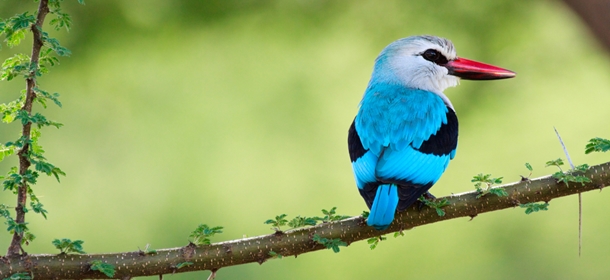 Henry Gathura is one of our most experienced Kenyan guides and a keen birder. Below he explains why Kenya is such a great place to visit for bird watching. For details of our Luxury Birding trip in Kenya, please click here.
Henry Gathura is one of our most experienced Kenyan guides and a keen birder. Below he explains why Kenya is such a great place to visit for bird watching. For details of our Luxury Birding trip in Kenya, please click here.
Kenya shelters some of Africa’s most spectacular landscapes which has a stunning avifauna. There are over 1000 species of birds that have been documented in this country. The habitats range from coastal beaches, reefs and creeks, arid and semi arid country, grass and bushland, woodland, lowland to montane forests,fresh and alkaline lakes. Many birds species are characteristics to particular habitats and as such, the Kenyan montains are important bird areas (IBA’s) to some endemic species.
Although birds dominate the landscape virtually everywhere in Kenya, there are some sites that are amongst world’s greatest protected areas like Kakamega forest in Western, Mukurueni valleys in Nyeri, central just to mention but a few. Of the 1186 globally threatened birds, 49 are in East Africa, Kenya being a home to some of the them. In a nutshell, there are about 60 important Bird areas which have been identified against a globally agreed criteria. Any birding safari in Kenya must visit many of these areas.
One of the most satisfying reasons for birding in Kenya is the sheer diversity of species and habitats. There are even new species and races that are being discovered. The tropical weather makes it even more better for the resident and the migrants distribution.
Over much of Kenya, heavier long rains fall from March to May, with the short peak in October and November. Many species of birds nest during and shortly after the rains when food is in abundance thus making birding watching at this time a spectacle to behold. The passing and the migrant species from both palearctic and south Africa are a regular feature in Kenya’s birding between October to April.
When on a bird watching safari in Kenya, always travel with an open mind and still better, always expect the unexpected!
To read more about Henry, and his description of the mating rituals of the flamingo, please click here.